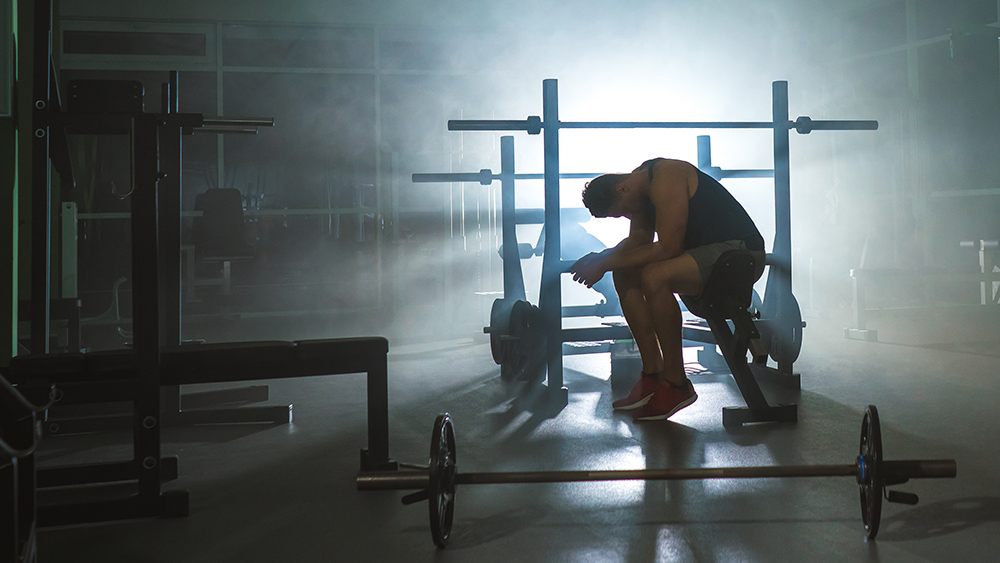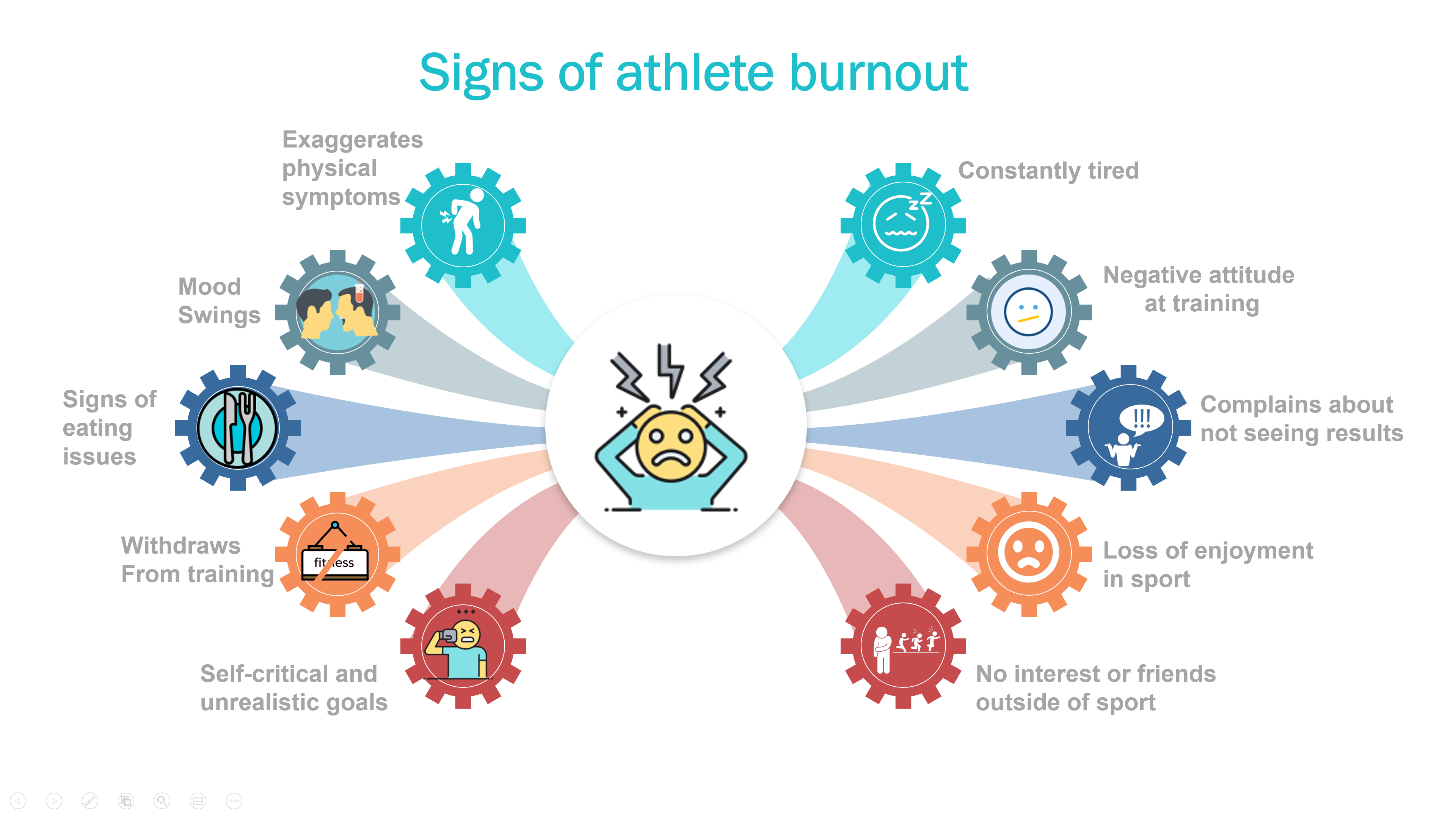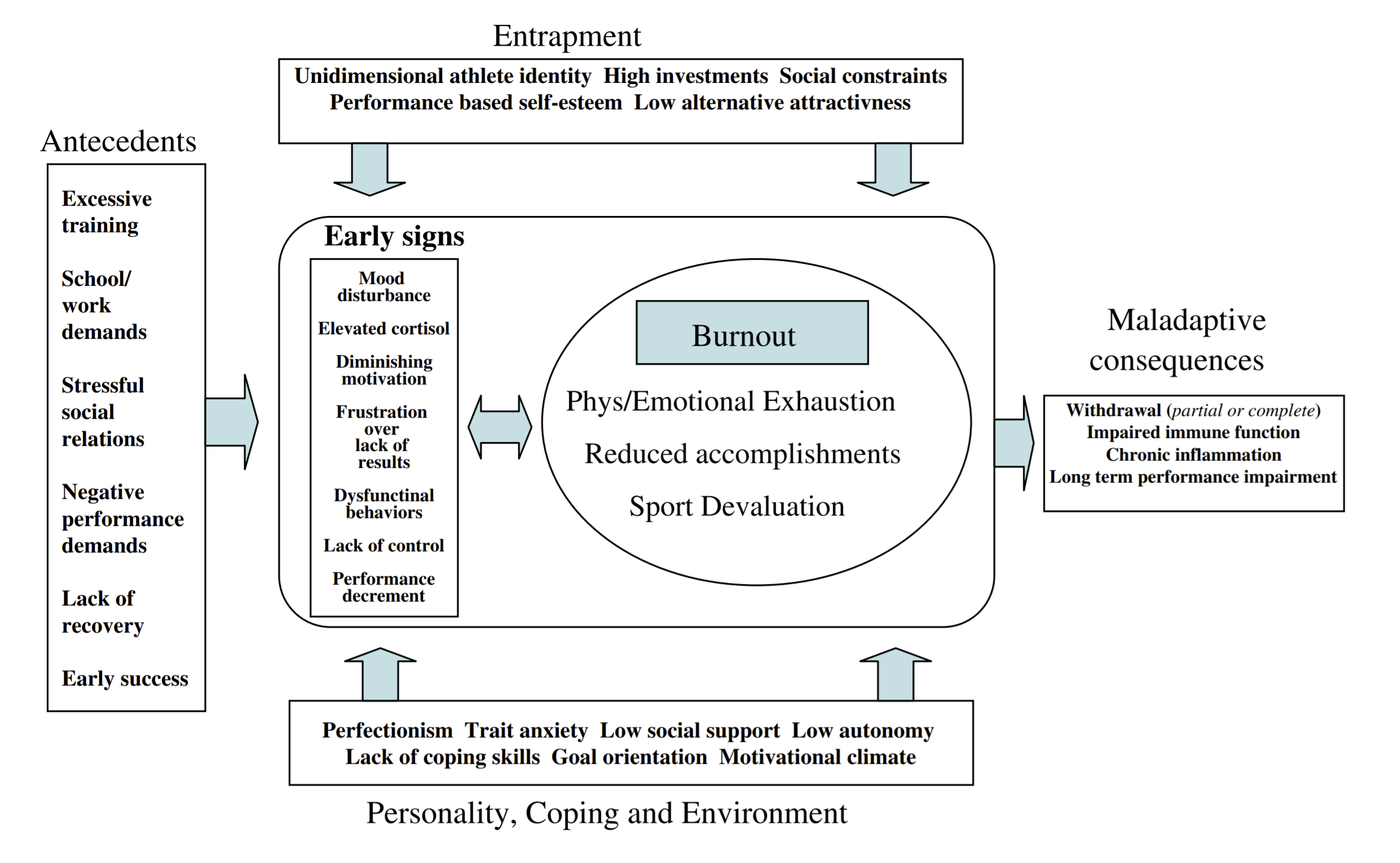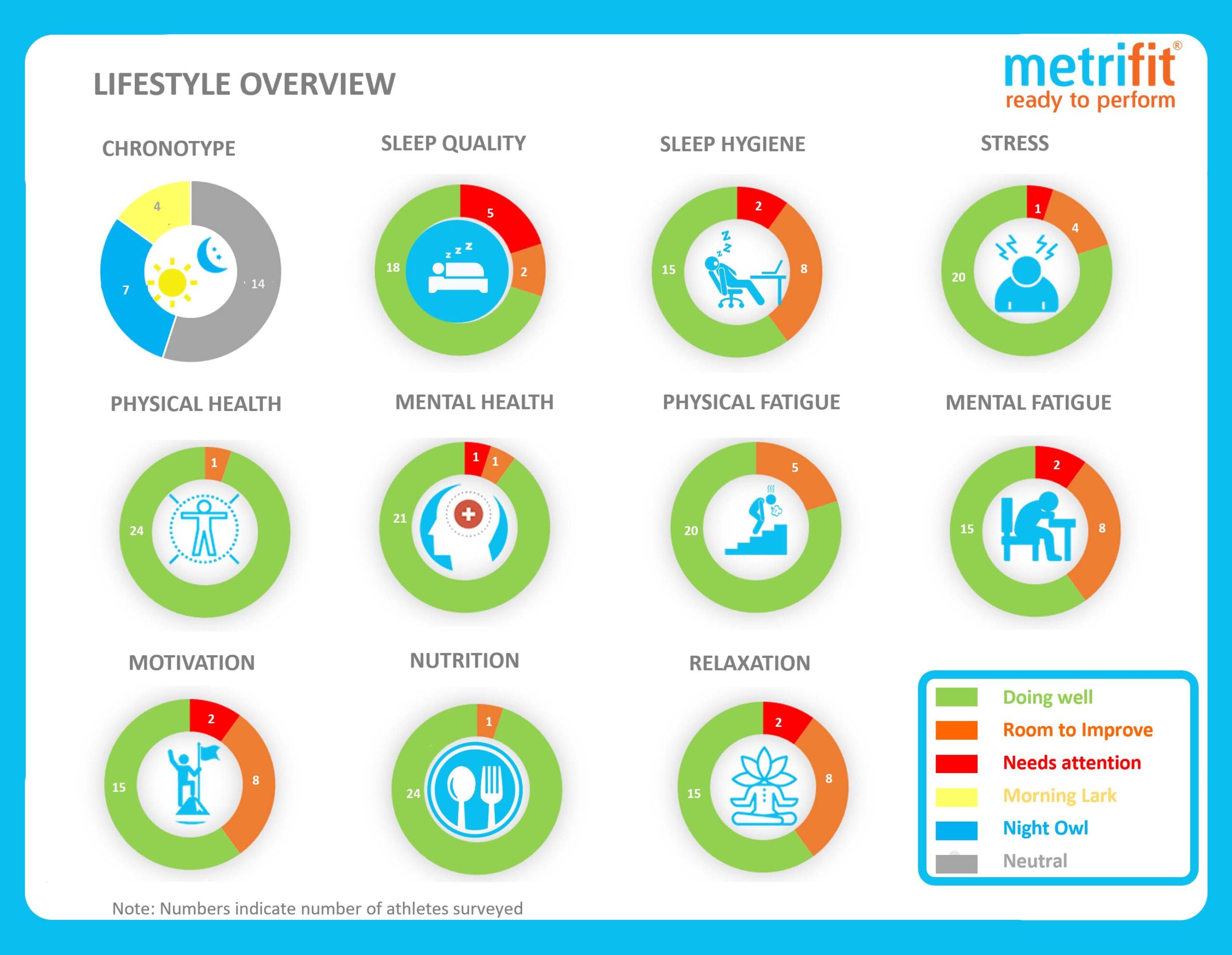Burnout – A Consequence of More Than Just Physical Stress
Athlete burnout is generally defined as a cognitive–affective syndrome comprised of emotional and physical exhaustion, a reduced sense of accomplishment, and sport devaluation. Emotional and physical exhaustion are characterized by the perceived depletion of emotional and physical resources resulting from training and/or competition – Burnout in Athletes

The prevalence of athlete burnout is difficult to establish, however estimates suggest that 1-11% of athletes may be affected by burnout symptoms, with 1-2% of athletes experiencing severe symptoms. Even more worryingly, it is believed to be on the rise. Athlete burnout is associated with many negative outcomes including a decrease in motivation, negative thoughts and emotion toward training, a reduction in performance and ultimately drop out.
What Causes Burnout?
Many, albeit small, daily hassles can contribute to the impairment of training adaptation, the development of overtraining syndrome, and ultimately burnout – Burnout in Athletes
The core component of athlete burnout is chronic stress. Athletes can experience 3 primary types of stressors which can lead to chronic stress
- physiological,
- psychological, and
- social
It is important when evaluating athletes’ stressors that all 3 are respectively considered. Non-training stressors (e.g. psychosocial factors) have gradually received more attention in research with demanding life events (for example work/college stressors), financial issues and relationships all important considerations. Participation in sports is a source of great enjoyment for most athletes. However, intense demands can cause chronic stress, eventually leading to burnout.
Over the years a lot of research has gone into establishing the cause of burnout and today the three primary associations with burnout are:-
- Stress and pressure: Constant pressure to win, train and perform could lead to mental and physical exhaustion
- Entrapment: The athlete does not feel they are getting the rewards and level of enjoyment they expected
- Empowerment: This is the belief that sports have become too controlling of the athlete’s life
Signs and Symptoms of Burnout
A person who is burned out often experiences a depressed mood, a reduced sense of accomplishment, feelings of helplessness and a loss of motivation. They can withdraw from friends and colleagues and in some cases leave sports altogether – Burnout in competitive and elite athletes
In her article When enough is enough: uncovering warning signs of burnout in (elite) athletes, Johanna Belz outlines 10 symptoms that can help coaches an practitioners to identify athletes suffering from burnout.
- Is constantly tired and sleeps much more than usual
- Exhibits an increasing aversion towards the sport by showing a negative attitude in trainings
- Complains about not seeing any results of his/her hard work and is fighting “a losing battle”
- Seems to have lost all enjoyment for the sport and only trains and competes to please others or abide to a professional contract
- Is a “24-hour athlete” and does not seem to have any other interests or friends outside of the sport
- Exaggerates physical symptoms, feigns an injury or drags out the recovery process of an existing injury
- Exhibits mood swings and gets easily frustrated, aggressive or depressed
- Shows signs of disordered eating
- Cheats in trainings or withdraws altogether from certain training activities
- Has unrealistically high self-imposed performance goals and is extremely self-critical

Perfectionism in Sport
Perfectionism is a personality disposition characterized by striving for flawlessness and setting exceedingly high standards of performance accompanied by tendencies for overly critical evaluations of one’s behaviour – Perfectionism and maladjustment
It is well understood that athletes have varying capacities to deal with stress. Athletes who have a lower capacity may be predisposed to experience burnout symptoms. A personality trait that is consistently associated with burnout is perfectionism. Perfectionism can be divided into two subgroups:-
- Group A: Perfectionistic Strivings – A strive for perfection
- Group B: Perfectionistic Concerns – The concern about making mistakes, negative feelings and noting discrepancies between standards and performances and concern of external evaluation from others
A plethora of research (which have been grouped together in this meta-analysis) indicates that perfectionistic concerns are associated with higher levels of burnout, and perfectionistic strivings are associated with lower levels.
The Integrated Model of Athlete Burnout
Many models of burnout have been suggested to explain the burnout phenomenon. In 2011, Gustafsson and colleagues suggested a model to integrate several burnout models and integrate a conceptual framework to provide a better understanding of athlete burnout. The model includes antecedents, early signs, consequences, and factors influencing the burnout process (personality, coping capacity and environmental factors).

Measuring Burnout
Measuring burnout is a difficult task due to the multi-faceted, complex nature of the considerations involved. The Athlete Burnout Questionnaire (ABQ) is a measure of athlete burnout and is recommended by a 2018 review on Burnout in Athletes as the ‘measure of choice’. The most recent version of the ABQ consists of 15 items measuring the dimensions of (a) physical/emotional exhaustion, (b) reduced sense of accomplishment and (c) sports devaluation.
In the Usefulness of the Athlete Burnout Questionnaire (ABQ) the authors conclude that although the Athlete Burnout Questionnaire has advanced research in this area further debates about the most suitable way to assess burnout among elite athletes are urgently needed. Prevention is better than cure and monitoring of an athlete’s well-being is really important to help notice signs and issues before they become major problems.
Prevention and Treatment
In line with recommendations, it is firstly important to be aware of the various signs and symptoms associated with athlete burnout. If coaches and practitioners fail to understand these signs and symptoms, athletes experiencing burnout may go undetected. This can lead to some of the negative consequences of burnout already discussed. The use of athlete education to inform athletes on stress management and relaxation techniques has been shown to be effective in reducing/alleviating burnout. Stress management research shows that Cognitive Behavioral Therapy interventions effectively reduce stress. If signs/symptoms of burnout are being displayed by an athlete, it is important to be able to take action to address any issues. Some useful guidelines in how to deal with the situation particularly for younger athletes are:-
- Encourage the athlete to take some time off from the sport
- Educate your athletes on relaxation and stress management techniques
- Know your athletes – are you aware of any stressors they are experiencing? Tools like Metrifit can help you keep track of any issues that may affect your athletes well-being
- How is your athlete motivated to participate? Are they playing for themselves or because they feel under pressure to play?
- Help the athlete feel more involved in the decision making process in relation to their sport and help them find their place and value on the team
The Use of Metrifit To Indicate Athletes At-Risk of Burnout
It is imperative that coaches understand the sign and symptoms of burnout. Using athlete monitoring systems such as Metrifit, can help coaches and practitioners to detect athletes at risk of burnout. As a result, the negative consequences that can result from athlete burnout (which can ultimately result in athlete dropout) can be reduced. Practitioners can be proactive in assisting player health and well-being instead of reactive when they have the data at their fingertips.
Metrifit helps alert coaches to issues that might be factors in causing burnout. As a result, coaches are able to implement measures to ensure the athletes are not under too much stress, are encouraged to take breaks in order to keep mentally and physically fresh, while also ensuring that the sense of enjoyment remains. Day to day lifestyle stress has a major influence on athletic performance and overall well-being. Educating and empowering athletes to improve their lifestyle can pay huge dividends on the playing field. Metrifit’s new Lifestyle Profiling is akin to a ‘health check’ for your team. It provides invaluable insight into the well-being of your team with clear visuals that help you make informed decisions to prepare your athletes for optimal performance.

To find out more contact us at or click on ‘Request Demo’ below.
Follow us on social media where we post regular blogs related to sports, performance and well-being.
References
Athlete Burnout and the Risk of Dropout Among Young Elite Handball Players
A qualitative analysis of burnout in elite Swedish athletes
Burnout in competitive and elite athletes
When enough is enough: uncovering warning signs of burnout in (elite) athletes
Perfectionism and maladjustment: An overview of theoretical, definitional, and treatment issues
Multidimensional Perfectionism and Burnout: A Meta-Analysis
Athlete burnout: an integrated model and future research directions
Usefulness of the Athlete Burnout Questionnaire (ABQ)
































 Previous Post
Previous Post Next Post
Next Post





